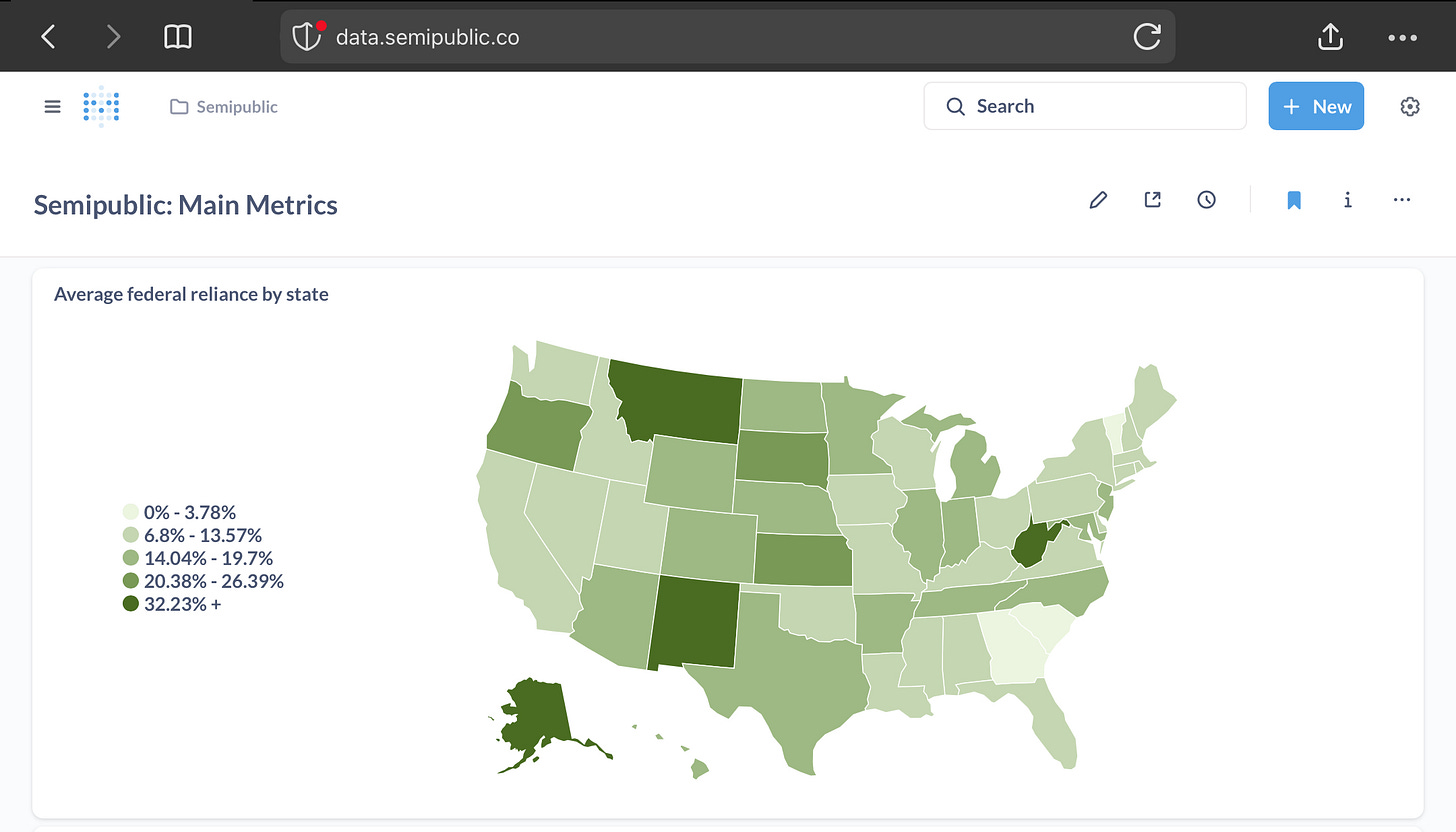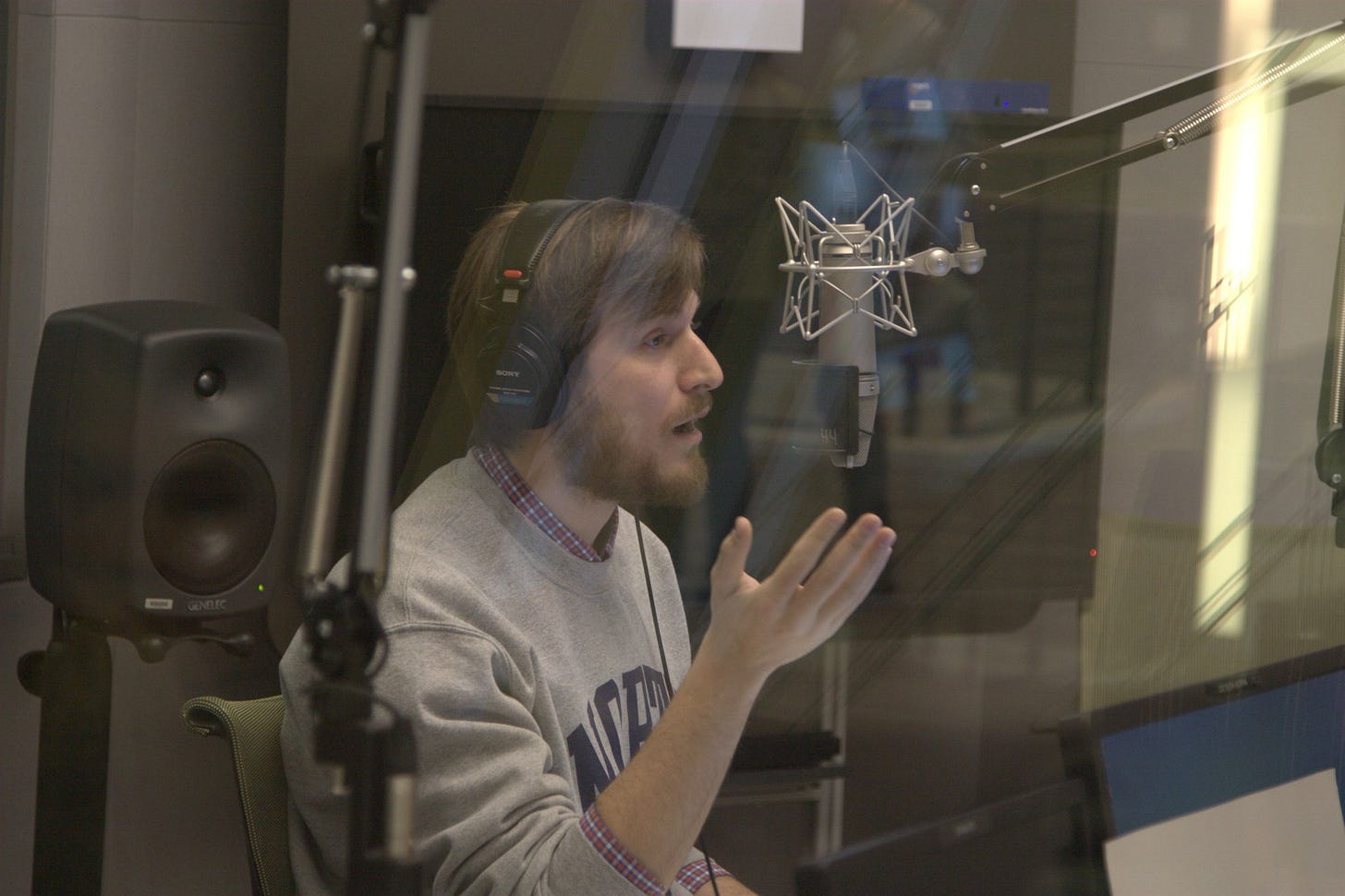Welcome to Semipublic
Public media is at a crossroads. Let’s take a data-based look at what happens next.
Federal departments shuttering. Universities suing. American detainees sent to El Salvadorian prisons. With so many consequential events happening in the US right now, President Trump’s plan to ask Congress to rescind public media’s federal funding seems laughably lawful. Trivial, even.
Public media has fought - and survived - several attempts to defund the system before. So why start a newsletter about it?
Some background
I am what public radio employees affectionately refer to as a “back seat listener”: Growing up, my parents would often play the local NPR station in the car on the way to and from school. The earnestness and intimacy of public radio was always deeply appealing to me, and after college, I parlayed that into a job at NPR’s headquarters in Washington, DC.
I spent nearly ten years at the network in a variety of editorial and administrative positions, working on everything from podcast launches, to fundraising messaging, to newsroom promotional strategy. Eventually, I became the Product Manager for NPR’s satellite distribution system, where I specialized in, among other things, public media finances. In October of 2024, I was part of a twenty percent reduction in force to the satellite distribution team.
Fast-forward to January: FCC Chair Brendan Carr opened investigations into both NPR and PBS, the first real sign that the Trump Administration was serious about revoking public media’s federal funding. Like anyone connected to the public media world, I was concerned. I wanted real insights - real data - into what could happen to the system after losing federal funding, but all I could find were vague references to rural stations being impacted and broad numbers from NPR and PBS themselves. How do we actually know rural stations would be hit the hardest? What does it mean when NPR says they only get about 1% of their revenue from the federal government?
So, I decided to use my knowledge of how public media’s finances work and come up with the answers myself. I started with a small study of 75 public media stations’ finances in February, and then an analysis of all the grants given by the Corporation for Public Broadcasting in March. Now, I’ve compiled the finances of every single public media station in the US with their finances publicly available (about 87% of all stations at the time of this writing). And the results are fascinating.
What this Substack is
Semipublic is a data-based look at the public media system in the US. I’ll explore how it works, possibilities for the future, and the events that are currently shaping it. Each insight will be powered by the data I’ve assembled of every station’s finances - the most complete public media dataset, I believe, outside of the Corporation for Public Broadcasting.
You can expect regular posts, between once a week and once every two weeks. There may be times when I depart from data journalism to cover more lighthearted topics.
All Semipublic posts will be free to read when published. Additionally, the graphs and key metrics I reference will be publicly available as an interactive dashboard to view and download.
What this Substack is not
Don’t expect too many insider stories or gossip from my time at NPR. Sorry.
There are also several debates about objectivity in public media that are currently happening. I will not be covering those here.

.
What do I get as a paid subscriber/founding member?
Believe it or not, compiling the dataset took months of work…and I’m not even finished yet. That’s not to mention the costs of data collection tools, hosting, etc. Paying to subscribe to Semipublic allows me to keep going.
Additionally, paid subscribers and founding members will get access to my full SQL dataset at data.semipublic.co, powered by Metabase. As long as you’re an active paid member, you can use the dataset to compare stations in your area, conduct market research, or even to discover insights about public media I’ve missed. The dataset is your oyster.
Final thoughts
I’ve had the singular pleasure of working with Current, the public media trade publication, so far in my journey to quantify the industry’s future. You can read my latest article, just published today, about my initial findings here.
Go, read what this Substack is all about, support Current (if you can), and come back to subscribe. I’ll be ready. Welcome.





